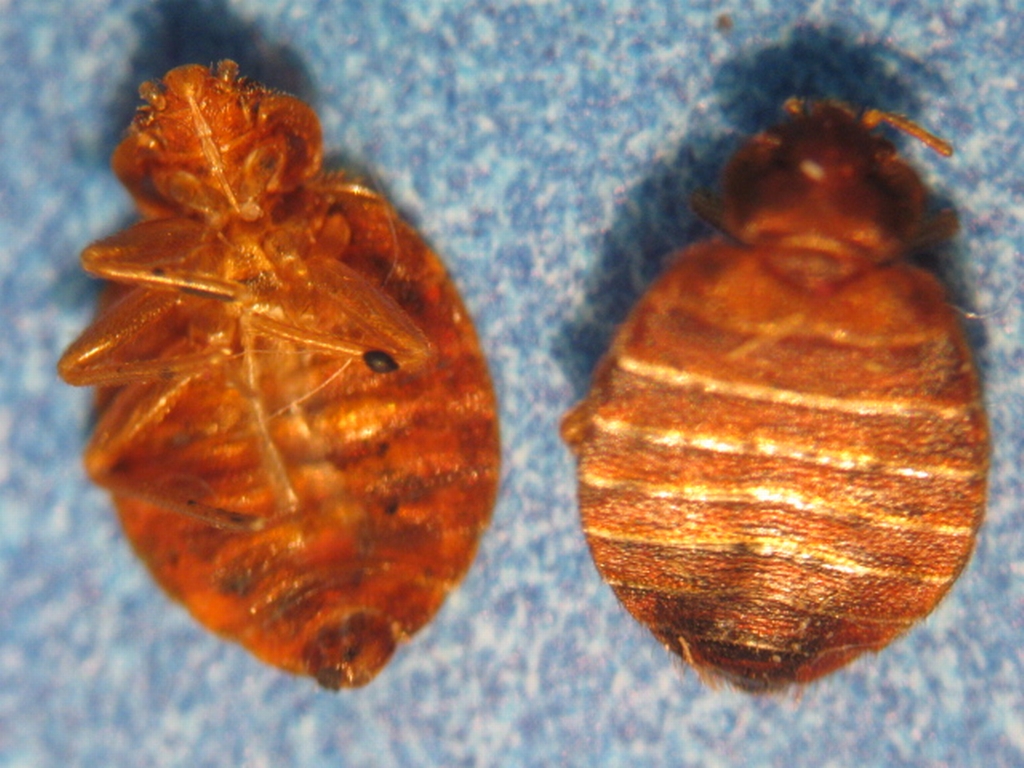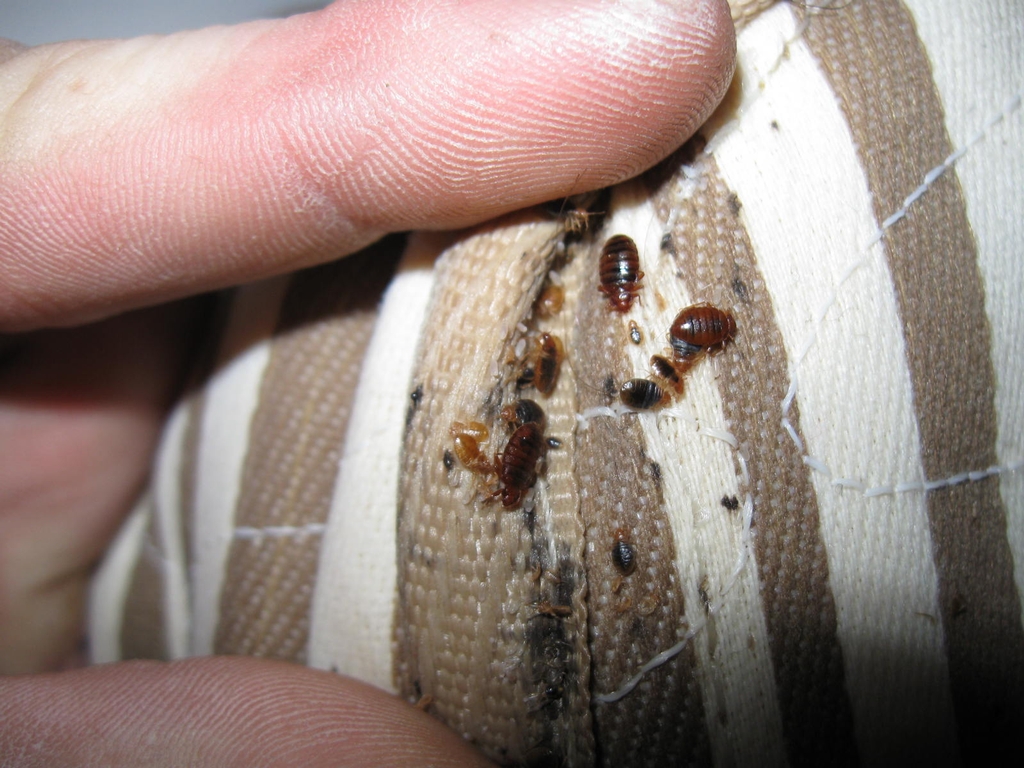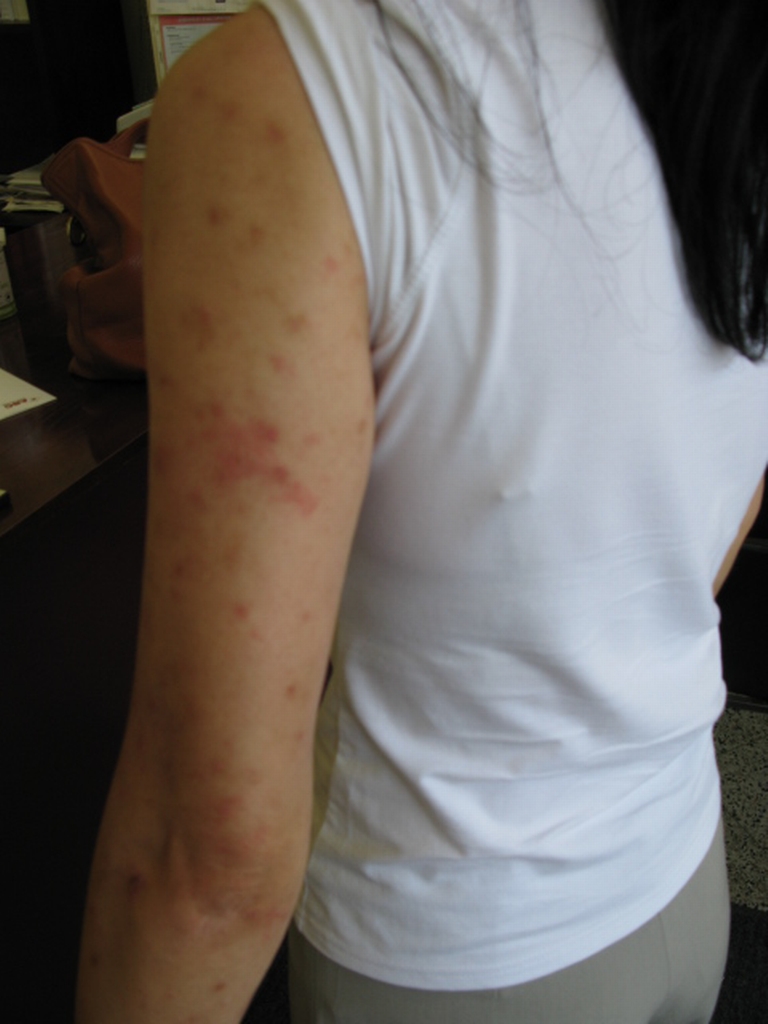
Bed bug

Preparation Guidelines (What to do before treatment)
We have always designed protocols with no or minimal preparation for occupants. It's much more efficient.
We prefer to take care of the preparation ourselves before treatment to avoid the spread of bedbugs and to save the occupants' efforts.
Avoid applying insecticides yourself before the intervention of a technician.
As a general rule, it is not useful to throw away your mattress or bed. If this is done, the bed is lost but the bedbug problem is not necessarily solved.
If you are a tenant, contact your landlord.
Identification
Adults : 5 mm
Nymphs : 1-4 mm
Eggs : 1 mm
Antennas : 4 segments
The color of the bed bugs varies from pale yellow to dark red-brown depending on the stage of development and blood ingestion.

Signs of infestation
- Feces (black spots)
- Cast exoskeleton skins from molting
- Adults bed bugs and nymphs
- Eggs (shinny white)
“Bite” as well as blood stains on sheets and pillows are suspicious but are not proof of the presence of bedbugs.
Biology
Egg production
- 1 to 5 eggs per day per adult female
- An average of 200 eggs but up to 500 per female in her lifetime
- The eggs are attached by a sticky secretion
- 6 to 10 days to hatch
Lifecycle
- Egg to adult: Typically 45 days at 22°C (21 days at 30°C and 120 days at 16°C) (relative humidity 75-80%)
- 5 nymphal stages requiring a blood meal to grow and molt to next stage
- Life expectancy under normal conditions: 316 days
- 3 to 4 generations per female per year
Development Factors
- Optimal temperature for bed bug development is around 28°C
- Reliable lethal temperatures: Min: -16°C constant for 4 days. Max: 45°C for a few minutes.
- When the temperature is around 11°C, some adult bedbugs can survive up to 16 months without feeding
- The constant availability of a host therefore to possibility to feed at each of the development stages
- Relative humidity wouldn't be a very big factor except for the extremes.
- Prefer human blood but can feed on a warm-blooded animal.
Habits
- Bed bug problems begin when they are introduced into our home.
- Once introduced, they can be moved or move themselves within a building.
- They will tend to settle where people sleep because carbon dioxide attracts them.
- When disturbed or repelled by an insecticide, they can hide anywhere.
- They gather in groups in their hiding places where they lay eggs, defecate and molt.
- When the accommodation is occupied and the temperature is around 22°C, a bed bug will seek to feed approximately once a week.
- Their meals take 3 to 12 minutes.
- Bed bugs prefer human blood but would settle for the blood of a warm-blooded animal.
- Bed bugs come out at night but could be active during the day if people are sleeping during the day or during a large infestation.
- Bed bugs are attracted to carbon dioxide (CO2) and heat over short distances.
- Bed bugs prefer a semi-dark environment, fabrics or uneven surfaces.
- Bed bugs disdain air drafts, polished surfaces and metal objects but they can still find their way there.
- They don't like movement very much.
- After a treatment, if no bites or new evidence of bedbugs are noted within a period of 45 days, the problem is almost certainly resolved. If bedbugs or bites appear after a period of 45 days without activity, the bedbugs have most likely been reintroduced.
Bite Reaction
- Reactions can vary greatly from one person to another depending on its degree of sensitivity.
- Normally, small reddish marks appear because of an allergic reaction to the saliva injected by the bed bug.
- One bed bug often inflicts multiple bites when feeding.
- Some people no longer react after being bitten several times
- Around 30% of the population has no reaction after a bite.
- Reactions can occur up to 2 weeks after the bite.

Health concerns
- Although bed bugs can carry pathogens, conclusive evidence of transmission to humans is lacking.
- Lack of sleep.
- Bacterial infection by scratching the bite.
- Isolation or psychological problems.
- Intoxication caused by inappropriate or repeated use of insecticide or other products.
- In severe infestations, possible respiratory problem caused by particles of shed skins that become airborne.
Similar products
See the store
 Skip site navigation
Skip site navigation








